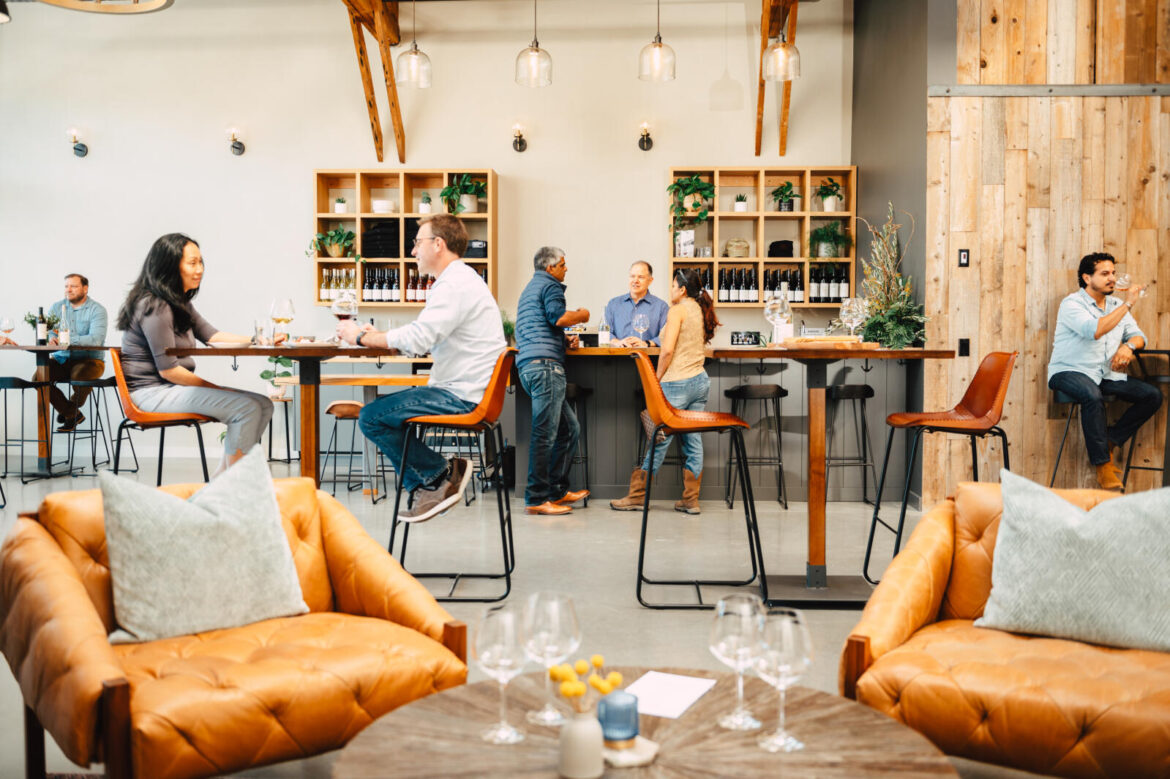At Brooks Note’s tasting room in downtown Petaluma, the wine is an obvious draw: Elegant Pinot Noirs, Rhône blends, lively whites — and the occasional Blaufränkisch — are delicious, balanced and fairly priced.
But like many wineries in Sonoma County, the tasting room has seen decreased foot traffic in the last year — fallout from a wine industry struggling to attract consumers.
“Financially we’re doing about the same as we did last year, but we’ve had to work a lot harder to get here,” said Garry Brooks, who owns the winery with his wife, Joanne. “We’ve had to make up for the downturn in traffic by doing more events, special tastings and guerrilla marketing.”
During periods of economic uncertainty, expenses like wine club memberships are often first to be cut. As a result, Brooks Note has seen an increase in cancellations and memberships being put on hold.
“Things are very hard to predict right now,” said Brooks. “Some days are quiet. Other days, customers blow the doors off. So we’re just trying to stay flexible.”
Tasting trends
According to Wine Business Monthly’s 2025 Tasting Room Survey, Sonoma County wineries saw an average 14% drop in tasting room visitors last year. In the first quarter of this year, traffic dipped an additional 8.4%, according to Community Benchmark.
That’s not good news for local wineries who rely on tasting room sales for a significant portion of their revenue.
Key factors contributing to reduced visitation include economic pressures, shifting consumer preferences, high tasting fees and a decrease in international visitors.
The trade organization Visit California forecasts the state will see a 9.2% decline in international visitors in 2025, a reduction driven by U.S. trade tensions and fading global sentiment.
In Napa County, where wineries saw an average 3% growth in tasting room traffic last year, according to the Wine Business Monthly survey, fewer visitors from abroad could have significant impact in 2025.
“Napa County tends to be more resistant to economic shifts but relies heavily on international tourism,” said Andrew Adams, editor of The Wine Analytics Report. “Sonoma County benefits from being more approachable and less expensive. But it suffers more dramatically when people pull back their spending.”
That’s why winery owners like Brooks are seeking creative new ways to attract guests.
“We’re lucky because our urban environment allows us to have many events,” he said. “Right now we’re hosting comedy nights, live music, trivia, bingo — that’s helped us weather the storm a bit.”
A nonalcoholic cocktail list has also proven highly popular and provided an additional stream of revenue.
“We want people to come in and have a great time hanging out with their friends — even those who don’t drink,” he said. “Guests tell me the space is warm and inviting and doesn’t feel stuffy. I think that resonates with people.”
Quality vs. quantity
According to the Wine Business Monthly survey, wineries that produce more than 1,000 cases of wine per year were more likely to have felt the decrease in tasting room visitors in 2024.
Benovia Winery, which produces about 5,000 cases per year in the Russian River Valley, was among them. So this month, tasting room manager Megan Koolmees decided to try something new: a wine club swap.
“We’re partnering with Inman Family Wines to offer reciprocal wine club benefits to members,” she said. “We’ve already had three reservations from their members who weren’t familiar with our brand.”
As the weather continues to warm, the winery has seen a seasonal uptick in guests. But what’s struck Koolmees most is the inquisitive nature of the guests themselves.
“More than previous seasons, we’re getting younger customers who really want to learn about wine and the brand itself,” she said. “They’re spending much more time tasting and asking questions. We may be seeing less people overall, but the quality of the guests is great.”
A small success
While Napa County wineries saw a 3% increase in visitors in 2024, data from Community Benchmark indicates visitation was down 3.1% during the first quarter of 2025.
Chris Bittner is a senior wine and grape analyst at American AgCredit’s market research firm Terrain. At the Wine Industry Network’s Wine Sales Symposium in Santa Rosa last month, he cited the dip in international tourism, expensive tasting fees and rising travel costs among the reasons to blame.
But despite the headwinds, one Napa Valley tasting room has continued to thrive — Vintner’s Collective, a cooperative tasting space for 18 small, family-owned wineries in downtown Napa.
“When we talk about the wine industry slumping, it’s often the very large wineries that are in trouble because they’re competing with beer, hard alcohol and other beverages,” said Garret Murphy, who founded the business 24 years ago. “We highlight small garagiste wineries and cult brands that produce less than 3,000 cases. That’s been key to our success.”
Among the tasting room’s key clientele are young consumers, which Garrett chalks up to the laid-back vibe and intimate atmosphere.
“We pour wines that are serious, but we approach them in a very light way,” he said. “We also make a point of hiring people with a range of wine knowledge, including people who are fun and love wine. We want to be able to connect with all customers equally.”
Garret acknowledges the wine industry is undergoing a transformation and Vintner’s Collective hasn’t been immune to uncertainty.
“There is no question we are in a strange place, so you can’t stick with the same thing you’ve done for years,” he said. “We try to be like a chameleon — we’re always thinking about how we can adapt and change. Our younger customers love when we take care of them. They just want to feel like they’re part of the club.”
You can reach Staff Writer Sarah Doyle at 707-521-5478 or sarah.doyle@pressdemocrat.com. Follow Sarah on Instagram at @whiskymuse.

